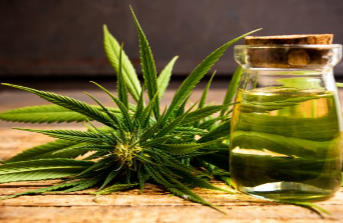Discover the beauty and benefits of weed

Weed leaves, integral components of the cannabis plant, hold a significant position in the realm of cannabis cultivation and product development. With the increasing acceptance and legalization of marijuana in various regions, the exploration of weed leaves has expanded.
These leaves, known for their distinct shape and intricate structure, play a crucial role in the extraction processes that yield various cannabis derivatives. Furthermore, they are utilized in the creation of a diverse range of products, offering consumers a unique experience driven by the freedom to explore the potential benefits and applications of these leaves.
Understanding the anatomy and significance of weed leaves contributes to broadening the horizons of cannabis enthusiasts seeking knowledge and innovation in this evolving industry.
Anatomy of Weed Leaves
One must understand the intricate anatomy of weed leaves to comprehend their significance in the realm of horticulture and pharmacology.
The leaf structure of cannabis plants consists of a network of veins supporting the leaf blade, where the photosynthesis process primarily occurs. This process converts light energy into chemical energy, vital for plant growth.
Appreciating this anatomy is fundamental for maximizing the plant’s potential in various applications.
Read more: White Stag Clothing
Importance in Cannabis Cultivation
The cultivation of cannabis heavily relies on understanding the importance of weed leaves in optimizing plant growth and quality. Weed leaves play a crucial role in nutrient absorption, ensuring the plant receives essential elements for healthy development.
Additionally, these leaves contribute to pest resistance, acting as a natural defense mechanism against harmful insects and diseases. By nurturing and protecting the weed leaves, cultivators can enhance the overall health and resilience of their cannabis plants.
Extraction Methods Utilizing Weed Leaves
Utilizing weed leaves for extraction involves employing various methods to isolate beneficial compounds for medicinal and recreational purposes.
Solvent extraction and dry sifting are common techniques used to extract cannabinoids and terpenes from the leaves.
These extracted compounds can then be used to create infused oils and topical creams, providing users with a variety of consumption options that cater to their specific needs and preferences.
Utilization of Weed Leaves in Products
Incorporating weed leaves into various products enhances their therapeutic and recreational value. Culinary creations like infused oils, teas, and edibles provide a delicious way to experience the benefits of weed leaves.
Embracing sustainable practices, companies are using weed leaves in eco-friendly packaging and textiles. By integrating weed leaves into diverse products, individuals can explore new dimensions of wellness and enjoyment while supporting environmentally conscious initiatives.
Conclusion
In conclusion, weed leaves play a crucial role in cannabis cultivation and product development. Their anatomy provides valuable insights for growers, while extraction methods harness their potent properties for various uses.
From oils to edibles, weed leaves are a versatile ingredient in the cannabis industry. Like the leaves of a tree that provide nourishment and protection, weed leaves are the foundation of many cannabis products, serving as the backbone of this thriving market.




